Another Saab Seminar on Submarines: Poland in the Background
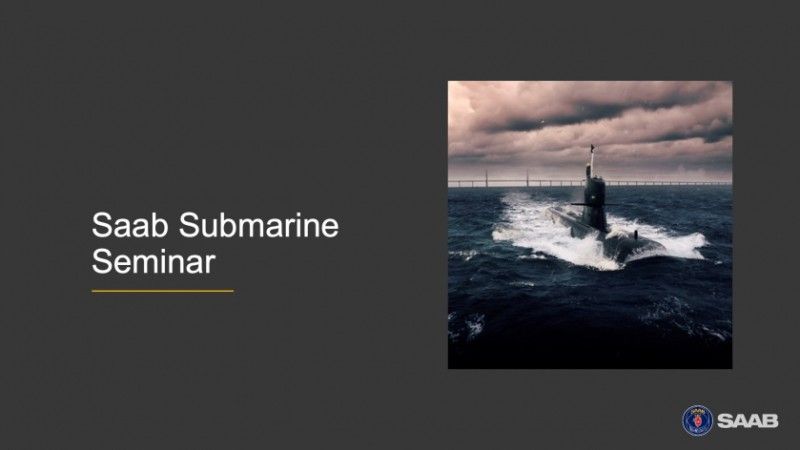
Disclosure of the information pertaining to the three most important programmes pursued by Saab Kockums was the most expected content during this year’s Saab seminar on submarines, organized on 3rd September. The programmes in question include the A26 class for the Swedish Navy, submarines for the Netherlands’ Navy, and the gap filler solution for the Polish Navy. Points not mentioned would be easier to list than the issues covered during the aforesaid seminar.
Webinars have become a fixed element of the Saab’s undertakings these days. Usually, three separate online conferences are held, covering the priority programmes pursued by the Swedish company. In March the seminar usually covers the Gripen MRCA, the September seminar covers the submarines, while the November one covers the sensors, primarily - the radars.
This year’s conference on the submarines took place on 3rd September 2020. It differed from the previous editions, as no specific information of any sort was provided. The seminar involved a brief presentation of the warship industry in post-War Sweden. Rear Admiral Eva Skoog Haslum, the commander of the Swedish Navy, also recalled the important role that the submarines play in the Swedish defence system and the methodology of putting them into use in modern navies, a movie clip was played, showcasing the Saab Kockums facility, and, finally, a general mention was made with regards to the Saab’s business intentions related to:
- Submarine procurement programme run by the Netherlands;
- Gap-filler solutions developed for the Polish Navy;
- Current Swedish programmes: A19/Gotland-class upgrades and A26/Blekinge-class development.
A26/Blekinge Programme
The reserved stance when it comes to releasing of the details on advancements of the A26/Blekinge new generation submarine programme was the most surprising thing about the conference held on 3rd September 2020, as this is the flagship program pursued by Saab Kockums. The most important innovations of this vessel have been recalled, as well as the ones implemented on the A19/Gotland submarines. The innovative solutions listed included the following elements: AIP system (Stirling engine), non-penetrating mast, and the cylindrical MMP (Multi-Mission Portal) between the torpedo tubes that expands the SOF mission capability and the range of autonomous and remotely controlled underwater vehicles that the submarine could employ.
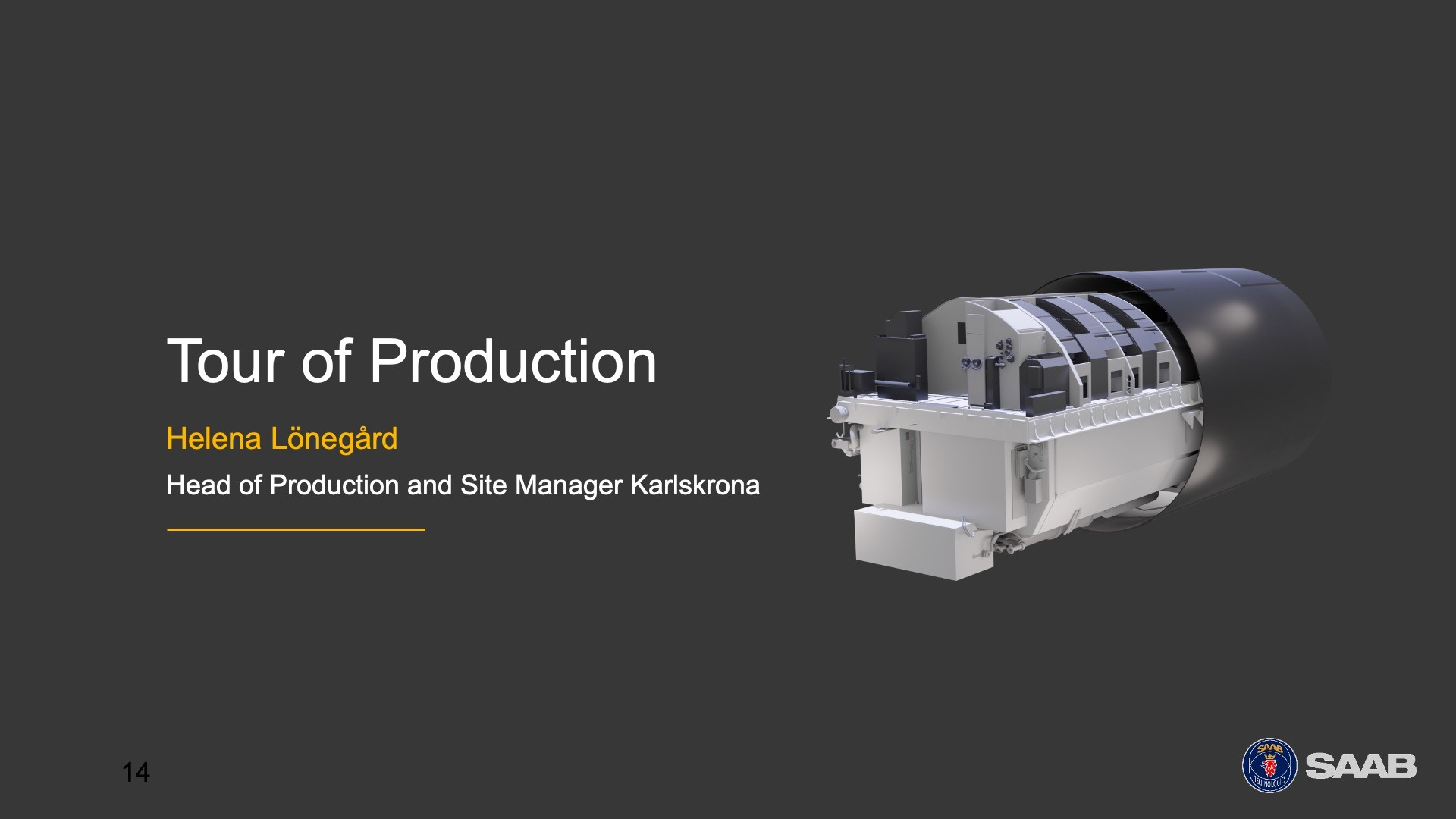
Alongside the generally known information on those vessels, no groundbreaking data was disclosed. No references were made with regards to advancements made in the case of the first A26 vessel that was presented in a visual form back in 2019.
This could mean that the level of advancement in this programme has not changed over the last year, while the programme itself could be suffering from some delays. Furthermore, if the movie clip showcased by Saab during the seminar, on the Saab Kockums facility, was shot recently, the delay may be significant (up to a few years). The clip has only shown the integrated stern section of the submarine and assembled engine/auxiliary section. Meanwhile, it needs to be said that the first A26 sub has been in construction since the mid-2015. If we refer to the previous schedule, at the current stage the hull assembly should be completed, with the hull being subjected to finishing works, while some of the onboard systems should begin testing already.
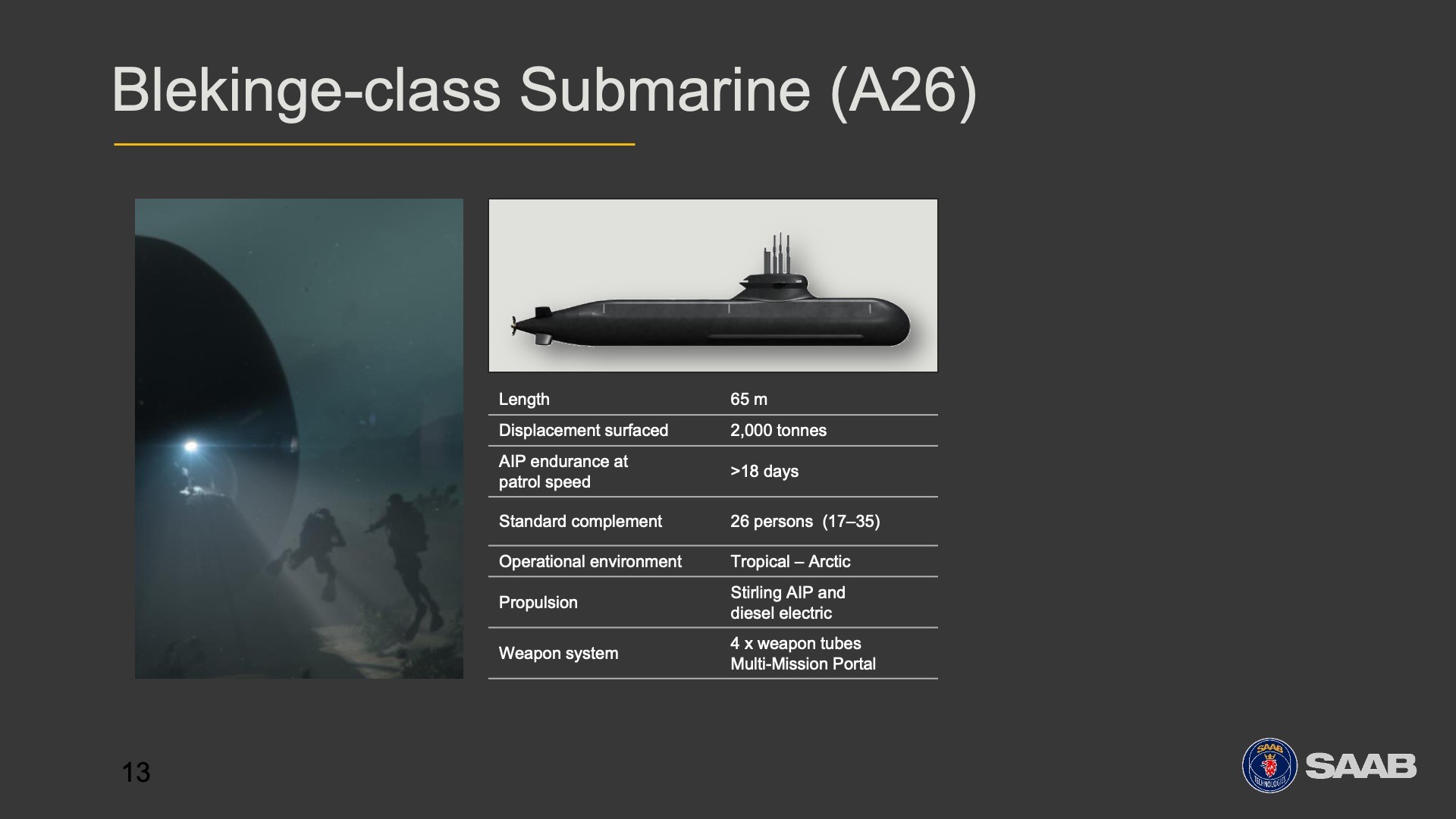
And maybe this is why Saab decided not to answer a simple question asked by us: “Will the A26 submarines be delivered, in line with the previous announcements - between 2024 and 2025?”
Gap-Filler for the Polish Navy: A17/Södermanland-class
No answer was provided to another two questions asked by us:
- Is the scope of upgrades proposed for the A17/Södermanland of the Polish Navy identical to the one implemented on the A19/Gotland vessels offered to the Swedish Navy?
- The Polish Navy is planning to use the A17/Södermanland vessels bought from Sweden as a gap-filler solution for at least 10 years. Is that even possible, because the maintenance cost was too high for the Swedish Navy?
What’s interesting, the former question was read out, however, ultimately, no details have been disclosed on the scope of work envisaged for the submarines for the Polish Navy. Information as such could make it possible to create a preliminary cost estimate of the whole investment - that should additionally include the cost of overhauls and repairs that would need to be done on the vessels so that they could remain in active service for at least 10 years, in line with the assumptions made by the Polish MoD.
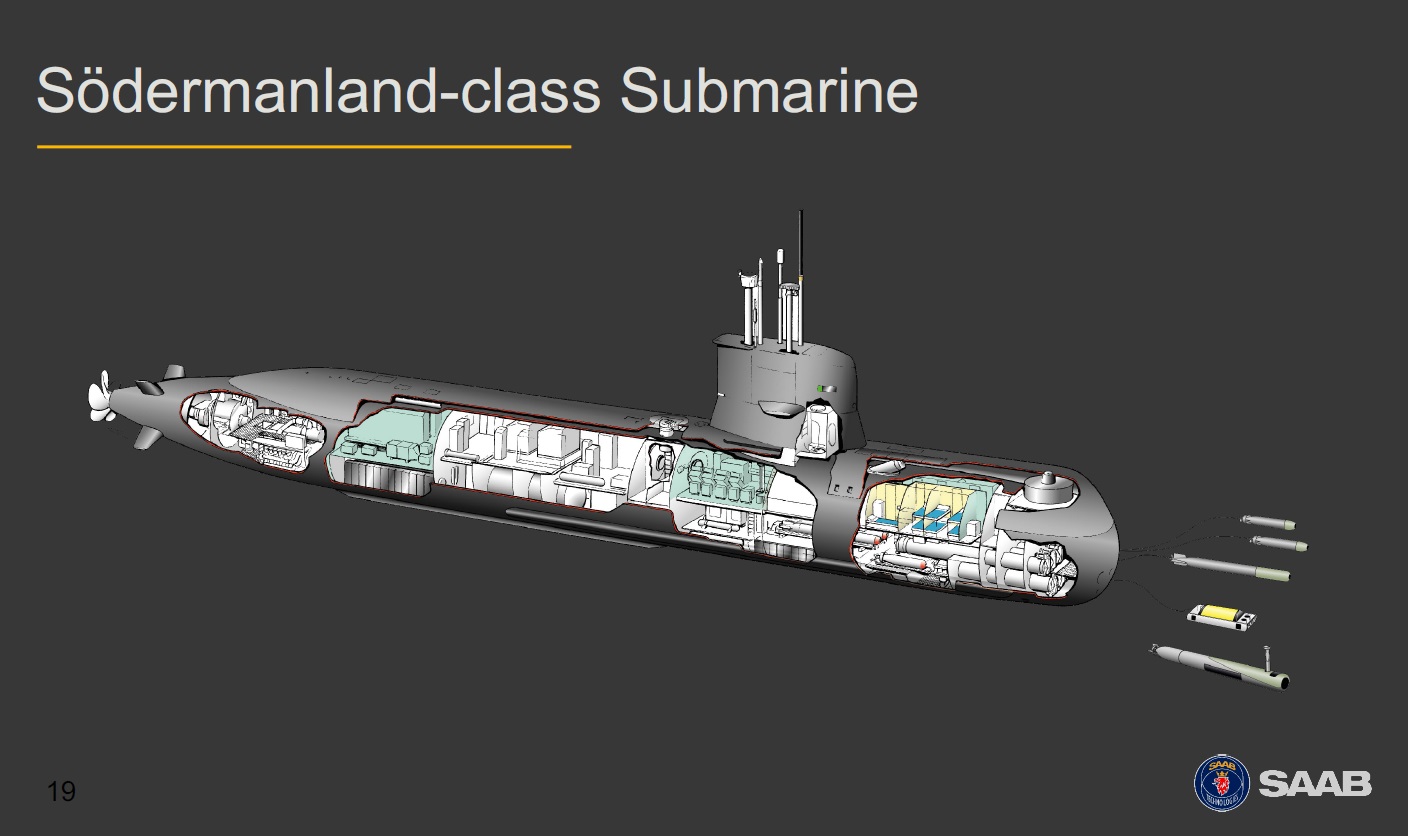
This could be explained by a Saab representative stating that the talks are happening at the governmental level, beyond the scope of influence of the company. So far one could only assume that Södermanlands would be fitted with a package identical to the one installed on the Gotland-class submarines, with that equipment also being expected to be integrated on the Blekinge-class. This would mean that the Polish vessels would feature a new AIP system, new sonars, and a new C2 suite. Would this investment be cost-effective for vessels expected to stay in service for just 10 years?
Furthermore, the Saab representatives suggest that their involvement in the Södermanland-class upgrades would be needed in both design, as well as at the stage of production. This could mean that Saab would be the main entity dealing with the Polish gap-filler solution, without a major involvement on the part of the Polish industry.
Saab Kockums: Export Prospects
When assessing the export capacity, the Swedes have prepared two slides showing that:
- More than 300 submarines with displacements ranging from 1,000 to 4,000 tonnes are operated around the world; 2/3 of those vessels are more than 2 decades old, expecting imminent replacement;
- Most of those vessels are stationed in Europe and Eastern Asia.
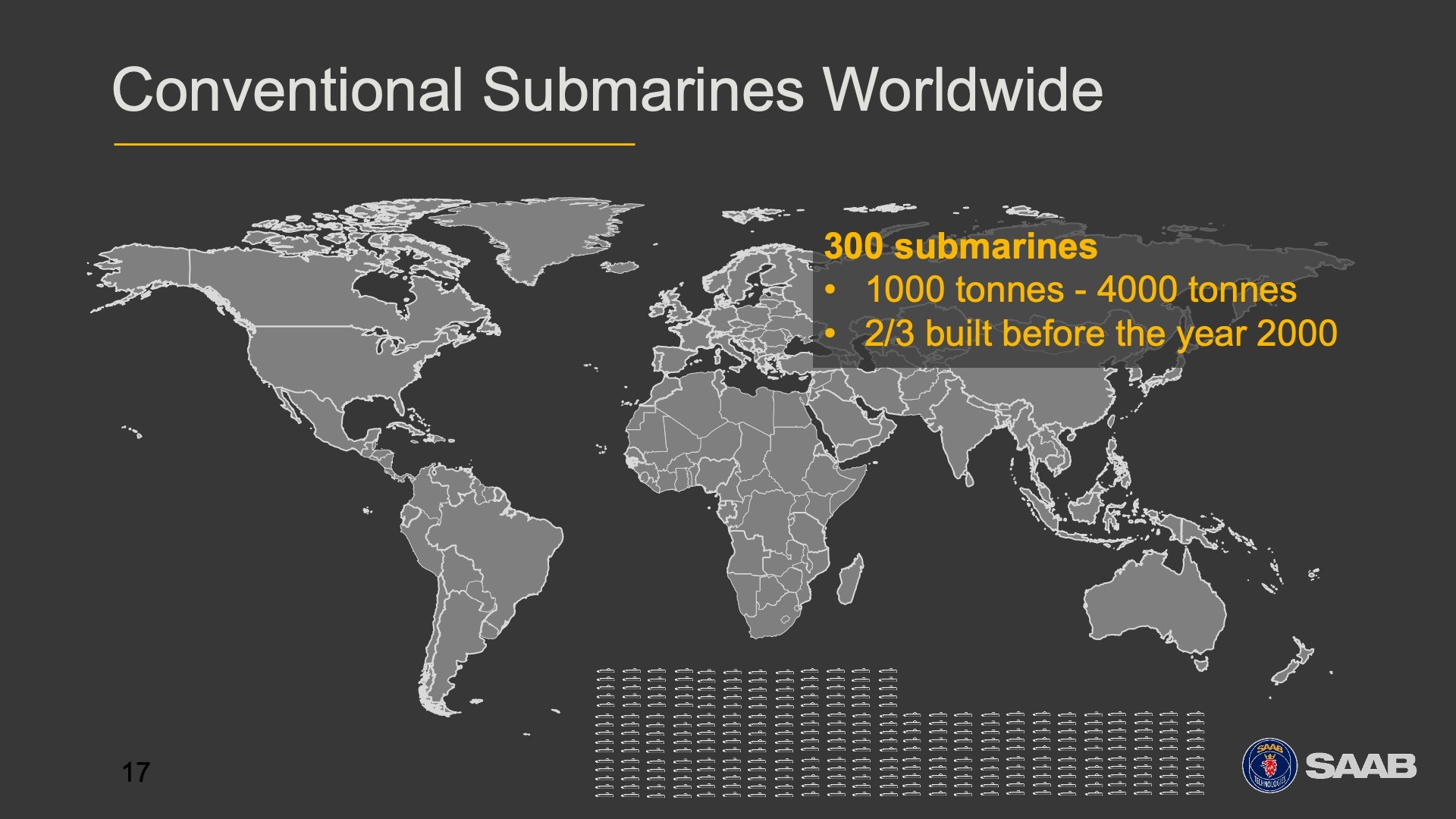
A presentation as such may suggest that demand for diesel/electric submarines would be huge all around the world and that Saab could sell its A26 derived new submarines globally. In reality, though, the slides referred to the global market that is partially unavailable to Sweden, including China, Russia, or even North Korea. The presentation itself has not mentioned any state other than the Netherlands or Poland, where Saab would be the preferred choice when it comes to submarines, not a single market on which it would be necessary for the Swedish shipyard to compete with German, French, Korean, Russian, or Chinese shipbuilding facilities.
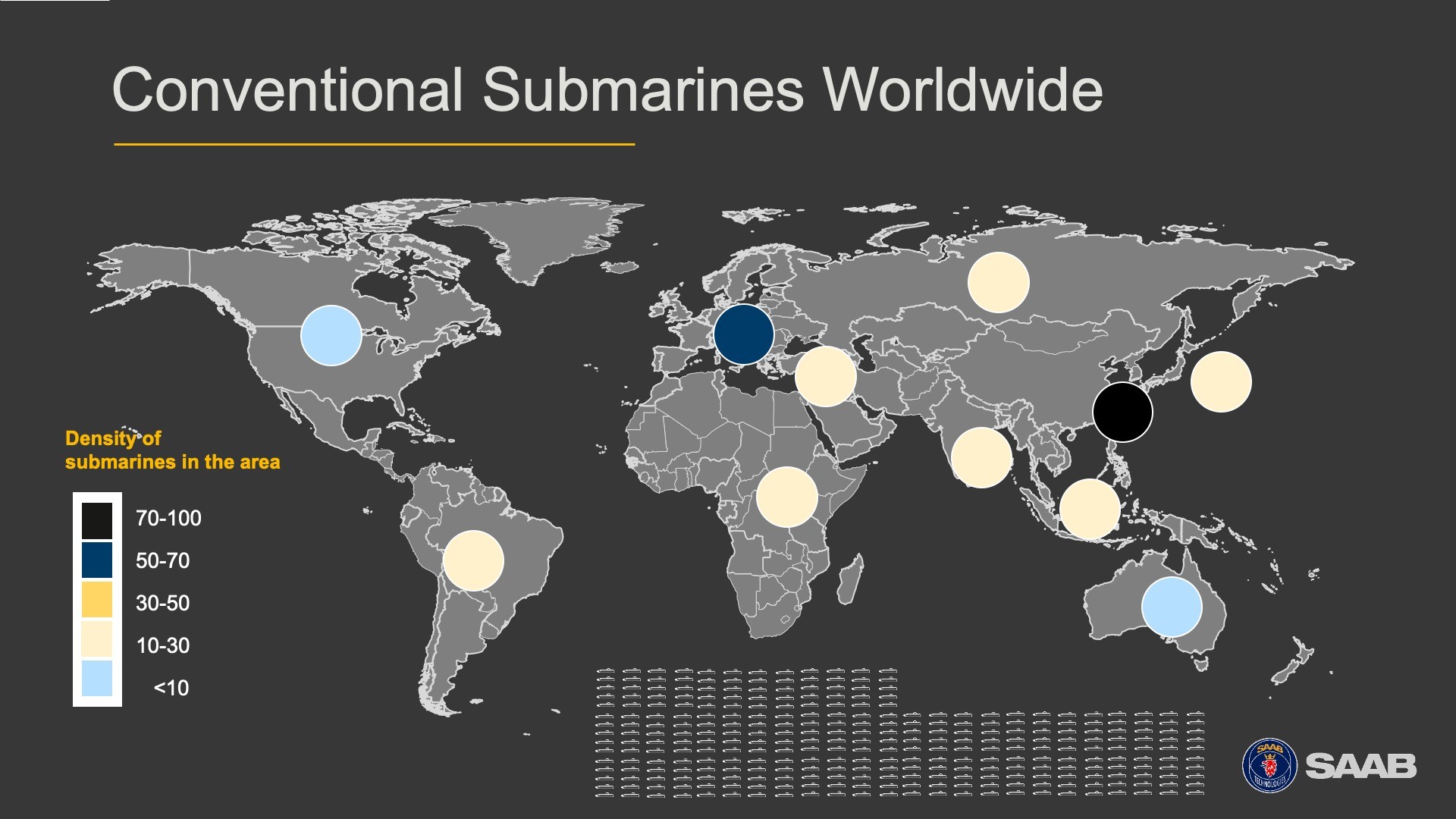
The difficulties are significant, as Saab needed to withdraw its offer in the tendering procedure in India, back in 2019, aimed at delivering six conventional Project 75 India (P-75I) submarines. The Walrus-class replacement procurement procedure in the Netherlands is far from its completion, despite the cooperation established by and between Saab and the Dutch Damen company.
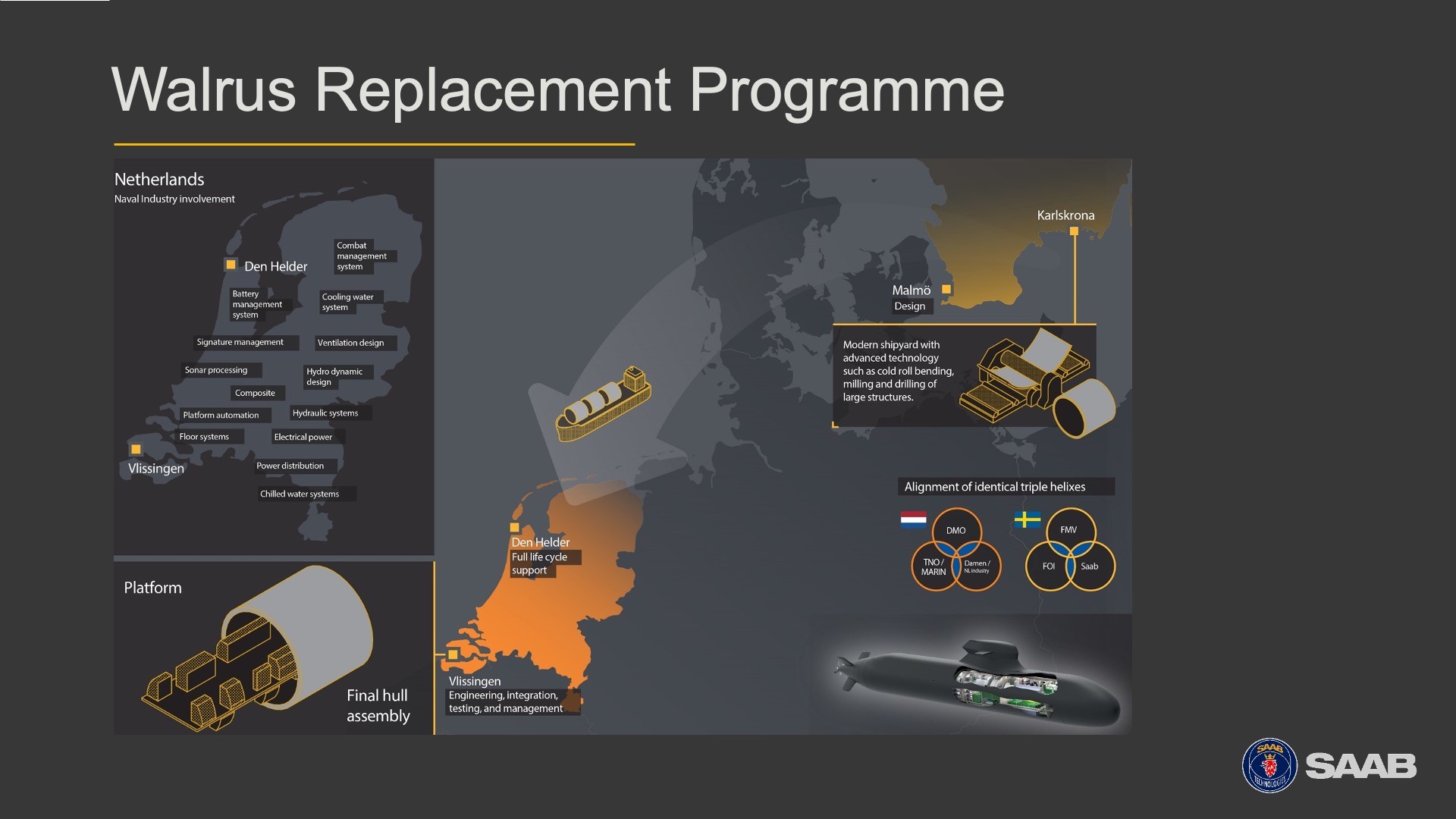
The only new tasking for Saab could be seen in an upgrade of the Collins-class submarines operated by the Australians, only if a modernisation as such is considered.
